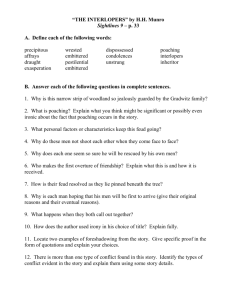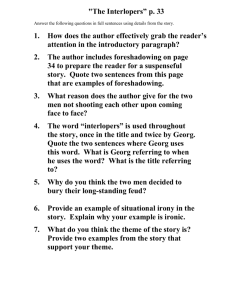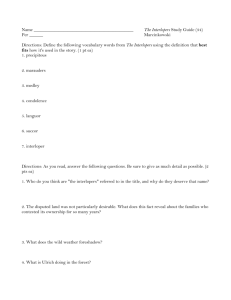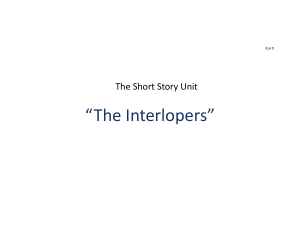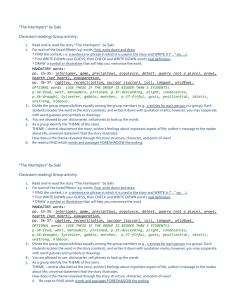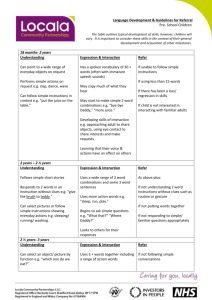File
advertisement
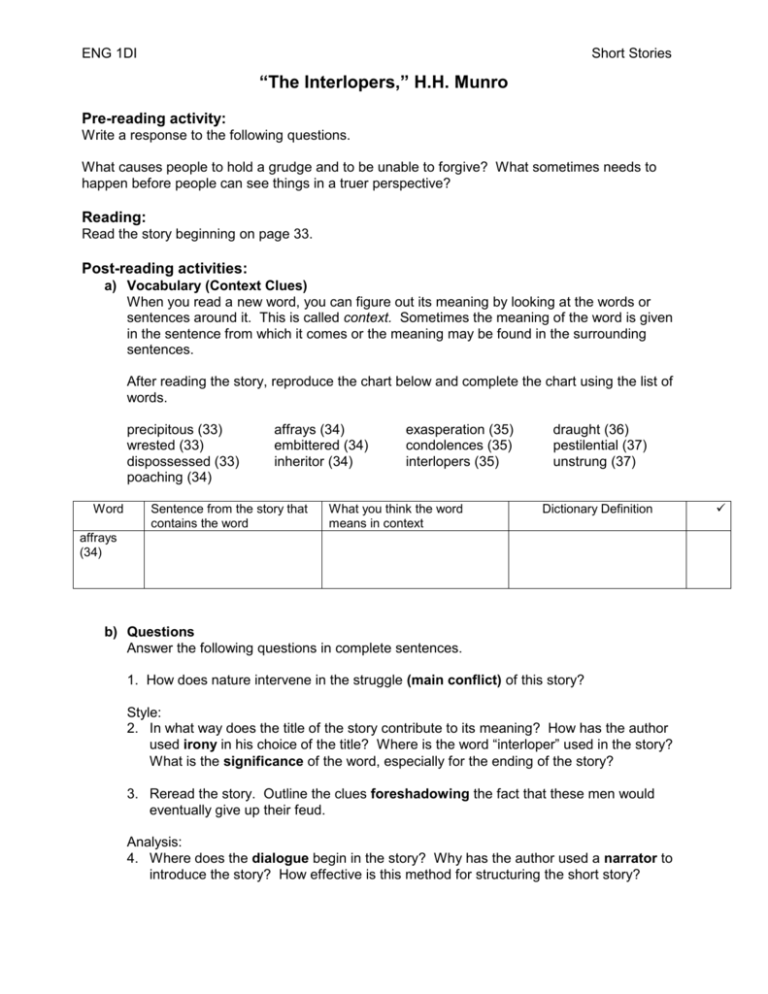
ENG 1DI Short Stories “The Interlopers,” H.H. Munro Pre-reading activity: Write a response to the following questions. What causes people to hold a grudge and to be unable to forgive? What sometimes needs to happen before people can see things in a truer perspective? Reading: Read the story beginning on page 33. Post-reading activities: a) Vocabulary (Context Clues) When you read a new word, you can figure out its meaning by looking at the words or sentences around it. This is called context. Sometimes the meaning of the word is given in the sentence from which it comes or the meaning may be found in the surrounding sentences. After reading the story, reproduce the chart below and complete the chart using the list of words. precipitous (33) wrested (33) dispossessed (33) poaching (34) Word affrays (34) embittered (34) inheritor (34) Sentence from the story that contains the word exasperation (35) condolences (35) interlopers (35) What you think the word means in context draught (36) pestilential (37) unstrung (37) Dictionary Definition affrays (34) b) Questions Answer the following questions in complete sentences. 1. How does nature intervene in the struggle (main conflict) of this story? Style: 2. In what way does the title of the story contribute to its meaning? How has the author used irony in his choice of the title? Where is the word “interloper” used in the story? What is the significance of the word, especially for the ending of the story? 3. Reread the story. Outline the clues foreshadowing the fact that these men would eventually give up their feud. Analysis: 4. Where does the dialogue begin in the story? Why has the author used a narrator to introduce the story? How effective is this method for structuring the short story? ENG 1DI Short Stories “The Interlopers,” H.H. Munro Pre-reading activity: Write a response to the following questions. What causes people to hold a grudge and to be unable to forgive? What sometimes needs to happen before people can see things in a truer perspective? Reading: Read the story beginning on page 33. Post-reading activities: a) Vocabulary (Context Clues) When you read a new word, you can figure out its meaning by looking at the words or sentences around it. This is called context. Sometimes the meaning of the word is given in the sentence from which it comes or the meaning may be found in the surrounding sentences. After reading the story, reproduce the chart below and complete the chart using the list of words. precipitous (33) wrested (33) dispossessed (33) poaching (34) Word affrays (34) embittered (34) inheritor (34) Sentence from the story that contains the word exasperation (35) condolences (35) interlopers (35) What you think the word means in context draught (36) pestilential (37) unstrung (37) Dictionary Definition affrays (34) b) Questions Answer the following questions in complete sentences. 1. How does nature intervene in the struggle (main conflict) of this story? Style: 2. In what way does the title of the story contribute to its meaning? How has the author used irony in his choice of the title? Where is the word “interloper” used in the story? What is the significance of the word, especially for the ending of the story? 3. Reread the story. Outline the clues foreshadowing the fact that these men would eventually give up their feud. Analysis: 4. Where does the dialogue begin in the story? Why has the author used a narrator to introduce the story? How effective is this method for structuring the short story?
